“Striped Mountain” Population: 186,500
Old name: Rodosto
Festival: 4-day festival to celebrate cherry harvest every June
Favourite son: Namık Kemal (poet, playwright and political activist)
Tekirdağ, picturesquely sited on the northern shore of the Sea of Marmara in Thrace (Trakya), is one of those unlucky places fated always to be on the way to somewhere else rather than a destination in its own right. People pour through it by the busload on their way to and from the İpsala border with Greece or en route to and from Çanakkale or on their way to the Marmara Islands but usually the most they do in Tekirdağ is hop out of the bus and into one of the many köfte (meatball) places conveniently clumped together across the road from the harbour. That’s a great shame because this is a town which is getting nicer by the year and which boasts a couple of museums that more than justify an hour or so of anybody’s time.
Tekirdağ has been indelibly associated in Turkish minds with rakı since 1880 when the sultan approved the private commercial production of rakı for the first time and the Minister of Finance, Sancazade Ragip Paşa, promptly set up the first factory on the road from Tekirdağ to Constantinople (İstanbul). Today Tekirdağ (and Yeni) Rakı is distilled in a factory close to Marmara Ereğli, east of Tekirdağ.
Don’t leave town without trying: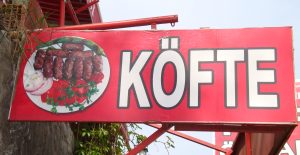
- Tekirdağ köfte. The waiters say that the difference lies in the cooking oil
- A glass of rakı, the famous lion’s milk alcoholic beverage that is Turkey’s national tipple -it’s best diluted with water and drunk with melon or cheese
Right in the heart of Tekirdağ is a busy traffic intersection dominated by a statue of Tekirdağlı Hüseyin Pehlivan (1908-82), a champion who excelled at that most Thracian of sports, oil wrestling. From the age of 14 it was already obvious that he was a champion in the making and he went on to become a regular victor in the bouts that take place every summer at Kırkpınar in Edirne, in the north western corner of Thrace.
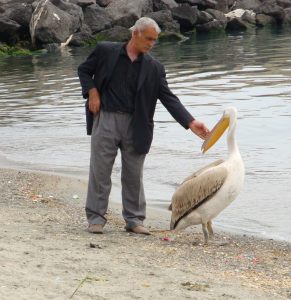
If you head down to the shore from the statue you will discover Tekirdağ’s pleasant waterfront. This is a town that still boasts a lively fishing industry, and large and small boats moor side by side in the harbour. Here men sit mending their nets in the afternoon sun while a myriad hopeful cats prowl around their feet. Fish stalls are lined up in the harbour alongside a small restaurant and cafes selling cheap and tasty fish sandwiches.
Strike out west along the promenade and you will eventually spot on the inland side of the road a restored wooden building that houses the local library whose wonderful reading room looks straight out over the Marmara. Take the steep road that runs up in front of the library to find the lovely house that serves as the Rakoczy Museum (closed Mondays).
Prince Francis II Rakoczy (1676-1735) was a Hungarian hero who fought against the Hapsburgs during the Hungarian War of Independence (1703-11). For his pains he was forced into exile, eventually winning asylum from the Tulip Era sultan Ahmed III. For 18 years he lived in Tekirdağ before being buried in Galata in İstanbul. In 1906, his remains were repatriated to Hungary along with what survived of his possessions. Then in the 1980s his home was painstakingly reconstructed and now serves as a sometimes-it’s-open-sometimes-it’s-not museum.
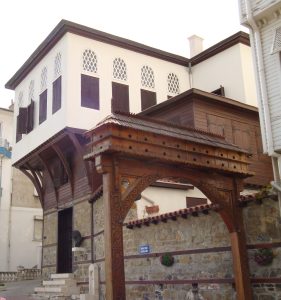 If you manage to get inside you will certainly appreciate the lovely watercolours of the old town done by Aladar Edivi Illes (1870-1958), even if Hungarian history is not your thing. A bust of the prince sits beside the front door and there’s a statue of him in the Bariş ve Özgürlük Parkı (Peace and Freedom Park) on the waterfront.
If you manage to get inside you will certainly appreciate the lovely watercolours of the old town done by Aladar Edivi Illes (1870-1958), even if Hungarian history is not your thing. A bust of the prince sits beside the front door and there’s a statue of him in the Bariş ve Özgürlük Parkı (Peace and Freedom Park) on the waterfront.
Crumbling wooden houses from the days when Tekirdağ was Rodosto dot the back streets behind the museum, where, too, you will come across a fine stone building that hosts art exhibitions; the art may be iffy but it’s still worth popping your head inside to see the glorious carvings above the doors and on the hall ceiling.
Eventually your path should bring you to the finest modern building in Tekirdağ, the Eski Vali Konağı (Governor’s Mansion) built in 1927 for the then governor, Arif Hikmet Bey, in the style known as First National Architecture and with wonderful panels of turquoise tiles above the windows. Today it houses one of Turkey’s finer local museums (closed Mondays), with everything labelled in English as well as Turkish.
The ground floor shows off the finds from Perinthos, a small town that stood on the site of what is now Marmara Ereğli to the east of Tekirdağ, but has effectively vanished. A notice rather sniffily points out that many of the finds made there now grace European museums, although it also concedes that the stonework from the ancient theatre was used to create the foundations for Çorlu State Hospital.
Most striking of all is the reconstructed interior of the tomb of Prince Teres which was found beneath the Naip tumulus and dates back to around 325 BC; the prince was buried with a stone bed, table and chairs as well as with the utensils he would need to eat a hearty meal in the after-life. Nearby stands a reconstruction of what his father, the king found buried inside the Harekattepe tumulus, might have looked like when decked out in full ceremonial purple and gold.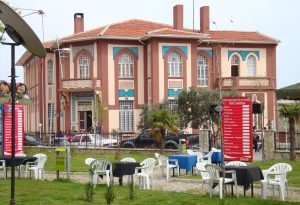
The upstairs features a small ethnographical museum with fine costumes, embroideries and rugs as well as a flag of Tekirdağ covered in Osmanlı text that had to be decommissioned once Atatürk’s alphabet revolution rendered its message unintelligible.
If you’re inspired by the fabrics on display, you’ll be pleased to learn that there’s more of the same to be seen inside the Namık Kemal Evi which commemorates the freedom-loving 19th-century poet, born nearby, who proved an inspiration for Atatürk. His statue stands in the Bariş ve Özgürlük Parkı (Peace and Freedom Park) near that of Prince Rakoczy.
Tekirdağ’s final attraction should be its trump card although somehow isn’t. The Rüstem Paşa Külliyesi is a mosque complex designed in 1553 by the famous Ottoman architect Sinan for Süleyman the Magnificent’s grand vizier, Rüstem Paşa (the same man who paid for the lovely mosque that stands in Tahtakale near İstanbul’s Spice Bazaar). The mosque is certainly elegant although it fails to dominate its surroundings like Sinan’s masterpiece, the Selimiye in Edirne, or even its counterpart in Lüleburgaz. Parts of the külliye have also been rather crudely restored to house modern shops as well as a nargile cafe.
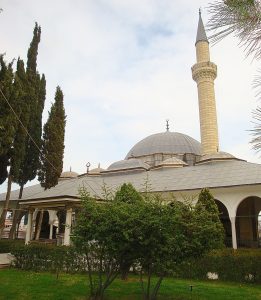 Sleeping
Sleeping
Most people will want to visit Tekirdağ either en route to somewhere else or on a day trip from İstanbul. However, there are also a couple of reasonable hotels here.
Grand Yat Hotel. Tel: 0282-261 1054
Ramada by Wyndham Tekirdağ. In the western outskirts of town
Rodosto Hotel. Tel: 0282-263 3701
Travel info
There are frequent buses from İstanbu’s Esenler otogar to Tekirdağ. The new bus station is inconveniently far from the centre but you should be able to flag down an İstanbul-bound bus on the waterfront when it’s time to return rather than having to go all the way back to it.
In summer ferries sail from Tekirdağ to the Marmara Islands.
Day trip destinations
Marmara Ereğli
Şarköy

